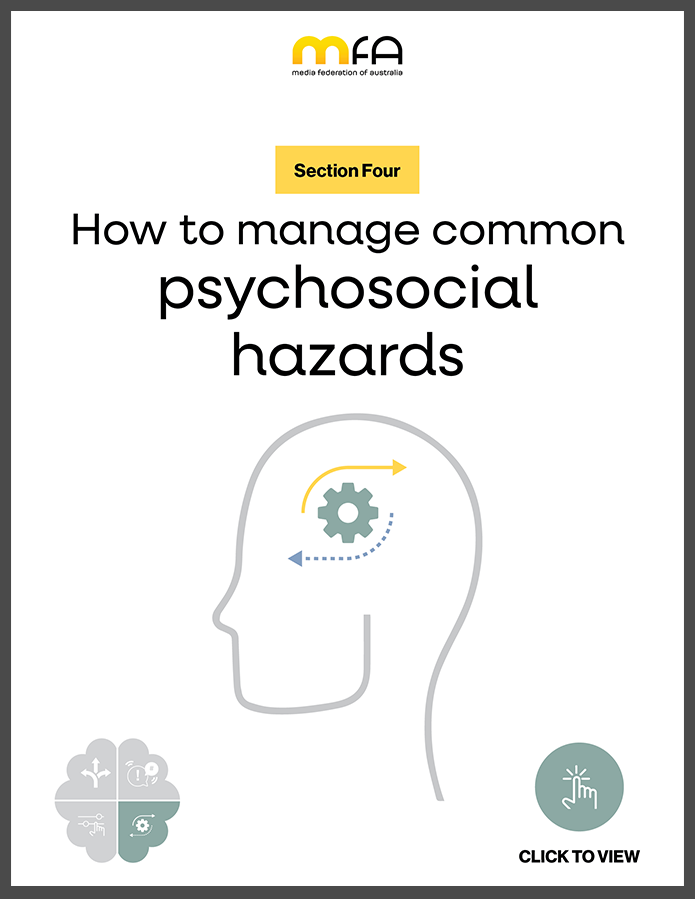How to Manage Common Psychosocial Hazards
Section Four delves into the best practice control guides for common psychosocial hazards, providing industry leaders, people managers, and HR professionals with the tools needed to manage work design.
This section covers the essentials of work design and its benefits, offering resources specifically tailored for industry leaders. Explore the insights to effectively consult, cooperate, and coordinate efforts to manage psychosocial risks and create a safer, more productive workplace.


FAQ's
The 14 psychosocial hazards identified in the workplace include high job demands, low job control, poor support, poor workplace relationships, role conflict, lack of role clarity, poor organizational change management, low recognition and reward, poor environmental conditions, remote or isolated work, violence and aggression, bullying, harassment, and discrimination. Understanding these hazards is essential for promoting psychological wellbeing in the workplace and ensuring motivation and accountability among employees.
High job demands can lead to stress, burnout, and physical health issues. HR professionals and people managers can address this by implementing workload management strategies, setting realistic deadlines, promoting regular breaks, and ensuring adequate staffing levels. Providing stress management resources is also crucial for mitigating the negative effects of high job demands.
Low job control occurs when employees have little influence over how they do their work. It can be addressed by involving employees in decision-making processes, offering flexible work options, and providing opportunities for skill development. Resources for agency leaders and industry leaders should focus on empowering employees to enhance their motivation and accountability.
Low recognition and reward can lead to decreased motivation and job satisfaction. Addressing this involves implementing recognition programs, offering performance-based incentives, and providing regular positive feedback. Resources for agency leaders can highlight best practices for recognizing and rewarding employees to boost psychological wellbeing in the workplace.
Poor support is characterized by a lack of assistance and guidance from colleagues and supervisors. HR professionals and people managers can improve support by fostering a supportive work environment, offering mentoring programs, and ensuring accessible communication channels. Providing resources for industry leaders to build supportive cultures can enhance overall psychological wellbeing in the workplace.
Psychological safety focuses on interpersonal dynamics within a team, ensuring that individuals feel safe to express themselves without fear of negative consequences. Psychosocial safety, on the other hand, addresses the overall work environment, including organizational policies and practices that impact employees' mental health and well-being.


